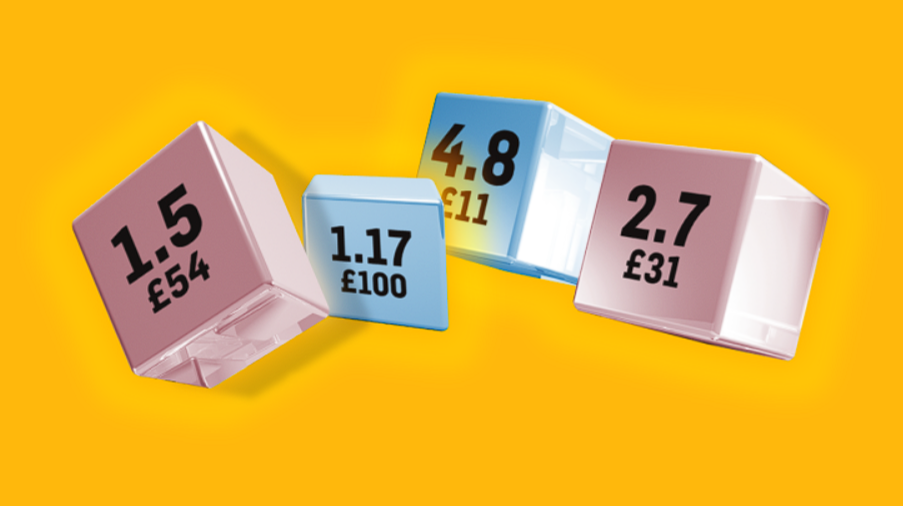In the world of sports betting, understanding odds is fundamental to making informed decisions and maximizing your potential returns. Odds represent the probability of an event occurring and determine the payout for winning bets. For beginners, grasping the concept of odds can significantly enhance your betting experience and success. This guide provides a comprehensive overview of odds, their types, and how to interpret them effectively.
What Are Odds in Betting?
Odds in betting reflect the likelihood of a particular outcome occurring in a sporting event. They are expressed in various formats and determine the amount of money you can win from a successful bet. Understanding odds is crucial for assessing the value of a bet and making informed betting decisions.
- Probability Indicator: Odds indicate the probability of an event happening, with lower odds representing a higher likelihood.
- Payout Determinant: Odds determine the payout you receive if your bet wins, influencing your potential returns.
- Value Assessment: Understanding odds helps you assess the value of a bet, identifying opportunities where the odds may not accurately reflect the true probability of an event.
Types of Betting Odds
Betting odds are presented in different formats, depending on the region and the bookmaker. The three most common types of odds are fractional, decimal, and American. Understanding each format is essential for navigating the betting landscape.
- Fractional Odds:
- Fractional odds are popular in the UK and Ireland and are expressed as a fraction, such as 5/1 or 11/4.
- The first number represents the potential profit, while the second number represents the stake.
- Example: Odds of 5/1 mean you win $5 for every $1 staked, plus your original stake.
- Decimal Odds:
- Decimal odds are favored in Europe, Canada, and Australia and are expressed as a decimal number, such as 2.00 or 3.50.
- The decimal represents the total payout, including the original stake.
- Example: Odds of 2.00 mean you win $1 for every $1 staked, plus your original stake.
- American Odds:
- American odds are used in the United States and are expressed as a positive or negative number, such as +200 or -150.
- Positive numbers indicate the underdog and the potential profit on a $100 stake.
- Negative numbers indicate the favorite and the amount needed to stake to win $100.
- Example: Odds of +200 mean you win $200 for every $100 staked, while odds of -150 mean you need to stake $150 to win $100.

How to Convert Between Odds Formats
Converting between odds formats can help you compare odds across different bookmakers and make informed betting decisions. Here’s how to convert between fractional, decimal, and American odds:
- Fractional to Decimal:
- Add 1 to the fractional odds and convert the result to a decimal.
- Example: 5/1 becomes 5 + 1 = 6.00.
- Decimal to Fractional:
- Subtract 1 from the decimal odds and convert the result to a fraction.
- Example: 6.00 becomes 6 – 1 = 5/1.
- American to Decimal:
- For positive American odds, divide the odds by 100 and add 1.
- For negative American odds, divide 100 by the odds and add 1.
- Example: +200 becomes 200/100 + 1 = 3.00, and -150 becomes 100/150 + 1 = 1.67.
Understanding Implied Probability
Implied probability is the conversion of betting odds into a percentage, representing the likelihood of an event occurring according to the bookmaker. Understanding implied probability helps you assess the value of a bet and make informed decisions.
- Calculating Implied Probability:
- For decimal odds, the formula is (1 / decimal odds) * 100.
- For fractional odds, the formula is (denominator / (denominator + numerator)) * 100.
- For American odds, the formula is (100 / (positive odds + 100)) for positive odds and (negative odds / (negative odds – 100)) for negative odds.
- Example:
- Decimal odds of 2.00 have an implied probability of (1 / 2.00) * 100 = 50%.
- Fractional odds of 5/1 have an implied probability of (1 / (1 + 5)) * 100 = 16.67%.
- American odds of +200 have an implied probability of (100 / (200 + 100)) = 33.33%.
Factors Affecting Betting Odds
Several factors influence the setting of betting odds, reflecting the dynamics of the betting market and the bookmaker’s assessment of probabilities. Understanding these factors can provide insights into how odds are determined and how they may change over time.
- Market Demand:
- The volume of bets placed on a particular market can influence the odds, with bookmakers adjusting odds to balance their liabilities.
- High demand for a specific outcome can lead to shorter odds.
- Bookmaker Margin:
- Bookmakers build a profit margin into their odds, known as the overround or vigorish, ensuring they make a profit regardless of the outcome.
- The margin varies among bookmakers and affects the competitiveness of their odds.
- Information and Data:
- Bookmakers use statistical data, historical trends, and real-time information to set and adjust odds.
- New information, such as injuries or weather conditions, can lead to changes in odds.
Strategies for Effective Odds Analysis
Analyzing odds effectively can enhance your betting experience and potential returns. Consider the following strategies to maximize your odds analysis:
- Compare Odds Across Bookmakers:
- Use odds comparison tools to find the best available odds for your bets, maximizing your potential returns.
- Different bookmakers may offer varying odds for the same event.
- Identify Value Bets:
- Look for bets where the implied probability of the odds is lower than your assessment of the true probability.
- Value bets offer higher potential returns and can enhance your long-term betting success.
- Monitor Odds Movements:
- Keep track of odds movements over time to identify trends and potential value bets.
- Understanding how odds change in response to market dynamics can provide insights into betting opportunities.
Conclusion
Understanding odds is a fundamental aspect of sports betting, influencing your betting decisions and potential returns. By grasping the different odds formats, converting between them, and analyzing implied probabilities, bettors can make informed decisions and identify value bets. Staying informed about the factors affecting odds and employing effective odds analysis strategies can significantly enhance your betting experience and success. As the betting landscape continues to evolve, understanding odds will remain a crucial skill for bettors seeking to maximize their potential returns and enjoyment.

